Day 57 -National Palace Museum, Taipei
(3 3/4" length 2 1/2 " width 5/8" height) 5 hours to complete
 The treasures of the National Palace Museum have come a long long way. The Palace Museum originally at the Forbidden City, Peking, was opened in 1925 after the last emperor was expelled. During WWII and fearing the imminent danger of an assault by the Japanese, more than 1 million of the finest imperial treasures were carefully placed into wooden crates and shipped south, beginning a 30-year odyssey that took the art over thousands of miles by train, boat, truck, and even hand towed barge, usually under the most adverse wartime conditions. In order to divert attention, these treasures were divided into several shipments, each going by a different route.
The treasures of the National Palace Museum have come a long long way. The Palace Museum originally at the Forbidden City, Peking, was opened in 1925 after the last emperor was expelled. During WWII and fearing the imminent danger of an assault by the Japanese, more than 1 million of the finest imperial treasures were carefully placed into wooden crates and shipped south, beginning a 30-year odyssey that took the art over thousands of miles by train, boat, truck, and even hand towed barge, usually under the most adverse wartime conditions. In order to divert attention, these treasures were divided into several shipments, each going by a different route.
 When the war ended, the treasures reunited in Nanking for a short while before Chiang Kai-shek after losing China, moved a selection of the finest of the lot, containing more than 600,000 pieces to Taiwan in 1949.
When the war ended, the treasures reunited in Nanking for a short while before Chiang Kai-shek after losing China, moved a selection of the finest of the lot, containing more than 600,000 pieces to Taiwan in 1949.
Now they say if you want to see the best in Chinese art, you do not go to Beijing because they are all at the National Palace Museum, Taipei. Opened in 1965, it is ranked as one of world's best museums Since the museum only has space to display around 15,000 pieces at any given time, the majority of the treasures (about 700,00 in total) are kept well protected in air-conditioned vaults buried deep in the mountainside. The displays are rotated once every three months, which means 60,000 pieces can be viewed in a year and it would take nearly 12 years to see them all.
These are the significant exhibits of the museum. (Descriptions and pictures are taken from the National Palace Museum website:)
 This piece is almost completely identical to a piece of bokchoy cabbage. Carved from verdant jadeite, the familiar subject, purity of the white vegetable body, and brilliant green of the leaves all create for an endearing and approachable work of art. Let's also not forget the two insects that have alighted on the vegetable leaves! They are a locust and katydid, which are traditional metaphors for having numerous children. This work originally was placed in the Forbidden City's Yung-ho Palace, which was the residence of the Kuang-hsü Emperor's (r. 1875-1908) Consort Chin. For this reason, some have surmised that this piece was a dowry gift for Consort Chin to symbolize her purity and offer blessings for bearing many children. Although it is said that the association between the material of jadeite and the form of bokchoy began to become popular in the middle and late Ch'ing dynasty, the theme relating bokchoy and insects actually can be traced back to the professional insect-and-plant paintings of the Yüan to early Ming dynasty (13th-15th c.), when they were quite common and a popular subject among the people for its auspiciousness. In the tradition of literati painting, it has also been borrowed as a subject in painting to express a similar sentiment, indirectly chastising fatuous officials. For example, in a poem written in 1775, the Ch'ien-lung Emperor associated the form of a flower holder in the shape of a vegetable with the tradition of metaphorical criticism found in the T'ang dynasty poetry of Tu Fu, in which an official was unable to recognize a fine vegetable in a garden. The emperor thereupon took this as a warning to be careful and alert. Regardless of whether it is a court craftsman or the maker of this jadeite bokchoy cabbage, all are merely giving play to their imagination and creativity, following the taste and directions of their patrons. Despite not having more historical records to probe these ideas, it nonetheless provides the viewer with greater room for imagination.
This piece is almost completely identical to a piece of bokchoy cabbage. Carved from verdant jadeite, the familiar subject, purity of the white vegetable body, and brilliant green of the leaves all create for an endearing and approachable work of art. Let's also not forget the two insects that have alighted on the vegetable leaves! They are a locust and katydid, which are traditional metaphors for having numerous children. This work originally was placed in the Forbidden City's Yung-ho Palace, which was the residence of the Kuang-hsü Emperor's (r. 1875-1908) Consort Chin. For this reason, some have surmised that this piece was a dowry gift for Consort Chin to symbolize her purity and offer blessings for bearing many children. Although it is said that the association between the material of jadeite and the form of bokchoy began to become popular in the middle and late Ch'ing dynasty, the theme relating bokchoy and insects actually can be traced back to the professional insect-and-plant paintings of the Yüan to early Ming dynasty (13th-15th c.), when they were quite common and a popular subject among the people for its auspiciousness. In the tradition of literati painting, it has also been borrowed as a subject in painting to express a similar sentiment, indirectly chastising fatuous officials. For example, in a poem written in 1775, the Ch'ien-lung Emperor associated the form of a flower holder in the shape of a vegetable with the tradition of metaphorical criticism found in the T'ang dynasty poetry of Tu Fu, in which an official was unable to recognize a fine vegetable in a garden. The emperor thereupon took this as a warning to be careful and alert. Regardless of whether it is a court craftsman or the maker of this jadeite bokchoy cabbage, all are merely giving play to their imagination and creativity, following the taste and directions of their patrons. Despite not having more historical records to probe these ideas, it nonetheless provides the viewer with greater room for imagination.
You may wish to know that at the time when I was in Taipei, China who has gifted Taiwan with 2 panda bears, "Tuan Tuan" and "Yuan Yuan" (which means "reunion" in Mandarin) has requested as an exchange of goodwill, that Taiwan loan them "Cabbage" and "Meat" for a term exhibition. Apparently the Taiwanese government has said yes to their request although many of the Taiwanese people fear that their national treasures may never be returned.
The other well-kept secret about these treasures is that for a brief moment in history, both "Cabbage" and "Meat" were in fact residing at a Maharajah's Palace.
Court records including bamboo writings, stone carvings and cave paintings have revealed that while the rest of the world was still grappling with "fire", 2 of the oldest civilisations were already exchanging gifts.
 Pi-hsieh
Pi-hsieh
Han Dynasty (206 BC-AD 220)
Height: 9.3 cm
The "pi-hsieh" is a mythological creature commonly thought to be able to ward off evil forces with its magical powers. In fact, its name means "to ward off evil" in Chinese. In the Han dynasty, "pi-hsieh" were commonly represented as winged, four-legged beasts, a form that was probably transmitted from Western Asia. Often found as huge stone statues, they would be placed along the spirit road leading up to tombs. Some were also carved from quality jade and used as ornaments for the wealthy and powerful. This example, originally carved from a piece of green jade, is represented with its head raised and jaws open as if the creature is emitting a low growl. Its stance alludes to the fact that it is walking forwards, and although the wings are pressed to its back, they give the impression that they will unfold and beat at any minute. The long beard of this spectacular creature sprouts from its lower jaw and extends all the way down to its chest, its tail brushes the ground behind it. Over the years, the color of the jade has changed to a mottled yellowish brown. This is one of the larger examples of Han dynasty jade "pi-hsieh" known. It is different from other jade carved "pi-hsieh" in that its snout is relatively long, resembling that of a horse, where others appear more like that of a tiger’s. Furthermore, it bears an uncanny resemblance to objects that scholars refer to as "dragon heads", adornments on bronze furnaces recently unearthed in Inner Mongolia and dating to the middle and late Han periods. This example in the collection of the National Palace Museum was once an important part of the imperial collection, and one of the emperor's poems is carved onto the chest. The Museum also has a two-tiered rosewood stand that accompanies this piece, the upper tier of which is carved with the words "Imperial curio for the Ch'ien-lung Emperor", and the lower tier carved with the same imperial poem found on the creature’s chest. These carved characters are also inlaid with silver.
Gilt Laced Cobalt Blue Revolving Vase with Decoration of Swimming Fish
The outer part of this vase with a revolving inside showing fish swimming appears at first glance to be a single piece but is actually divided into three parts--1) the mouth and neck, depicted with a pattern of suspended jewels; 2) the shoulder, decorated with golden chrysanthemum petals, winding floral branches, and four small rings; and 3) the body and bottom--which have altogether four panels of openwork so that when the inner vase spins, one can clearly see goldfish swimming leisurely in the greenish water. Each part was originally first fired separately and then after completion put together and fired with low-temperature glaze to fuse them.
 The treasures of the National Palace Museum have come a long long way. The Palace Museum originally at the Forbidden City, Peking, was opened in 1925 after the last emperor was expelled. During WWII and fearing the imminent danger of an assault by the Japanese, more than 1 million of the finest imperial treasures were carefully placed into wooden crates and shipped south, beginning a 30-year odyssey that took the art over thousands of miles by train, boat, truck, and even hand towed barge, usually under the most adverse wartime conditions. In order to divert attention, these treasures were divided into several shipments, each going by a different route.
The treasures of the National Palace Museum have come a long long way. The Palace Museum originally at the Forbidden City, Peking, was opened in 1925 after the last emperor was expelled. During WWII and fearing the imminent danger of an assault by the Japanese, more than 1 million of the finest imperial treasures were carefully placed into wooden crates and shipped south, beginning a 30-year odyssey that took the art over thousands of miles by train, boat, truck, and even hand towed barge, usually under the most adverse wartime conditions. In order to divert attention, these treasures were divided into several shipments, each going by a different route. When the war ended, the treasures reunited in Nanking for a short while before Chiang Kai-shek after losing China, moved a selection of the finest of the lot, containing more than 600,000 pieces to Taiwan in 1949.
When the war ended, the treasures reunited in Nanking for a short while before Chiang Kai-shek after losing China, moved a selection of the finest of the lot, containing more than 600,000 pieces to Taiwan in 1949.Now they say if you want to see the best in Chinese art, you do not go to Beijing because they are all at the National Palace Museum, Taipei. Opened in 1965, it is ranked as one of world's best museums Since the museum only has space to display around 15,000 pieces at any given time, the majority of the treasures (about 700,00 in total) are kept well protected in air-conditioned vaults buried deep in the mountainside. The displays are rotated once every three months, which means 60,000 pieces can be viewed in a year and it would take nearly 12 years to see them all.
These are the significant exhibits of the museum. (Descriptions and pictures are taken from the National Palace Museum website:)
"Cabbage"
aka Jadeite Cabbage with Insects
Ch'ing Dynasty (1644-1911)
Length: 18.7 cm, width: 9.1 cm, thickness: 5.07 cm
aka Jadeite Cabbage with Insects
Ch'ing Dynasty (1644-1911)
Length: 18.7 cm, width: 9.1 cm, thickness: 5.07 cm
 This piece is almost completely identical to a piece of bokchoy cabbage. Carved from verdant jadeite, the familiar subject, purity of the white vegetable body, and brilliant green of the leaves all create for an endearing and approachable work of art. Let's also not forget the two insects that have alighted on the vegetable leaves! They are a locust and katydid, which are traditional metaphors for having numerous children. This work originally was placed in the Forbidden City's Yung-ho Palace, which was the residence of the Kuang-hsü Emperor's (r. 1875-1908) Consort Chin. For this reason, some have surmised that this piece was a dowry gift for Consort Chin to symbolize her purity and offer blessings for bearing many children. Although it is said that the association between the material of jadeite and the form of bokchoy began to become popular in the middle and late Ch'ing dynasty, the theme relating bokchoy and insects actually can be traced back to the professional insect-and-plant paintings of the Yüan to early Ming dynasty (13th-15th c.), when they were quite common and a popular subject among the people for its auspiciousness. In the tradition of literati painting, it has also been borrowed as a subject in painting to express a similar sentiment, indirectly chastising fatuous officials. For example, in a poem written in 1775, the Ch'ien-lung Emperor associated the form of a flower holder in the shape of a vegetable with the tradition of metaphorical criticism found in the T'ang dynasty poetry of Tu Fu, in which an official was unable to recognize a fine vegetable in a garden. The emperor thereupon took this as a warning to be careful and alert. Regardless of whether it is a court craftsman or the maker of this jadeite bokchoy cabbage, all are merely giving play to their imagination and creativity, following the taste and directions of their patrons. Despite not having more historical records to probe these ideas, it nonetheless provides the viewer with greater room for imagination.
This piece is almost completely identical to a piece of bokchoy cabbage. Carved from verdant jadeite, the familiar subject, purity of the white vegetable body, and brilliant green of the leaves all create for an endearing and approachable work of art. Let's also not forget the two insects that have alighted on the vegetable leaves! They are a locust and katydid, which are traditional metaphors for having numerous children. This work originally was placed in the Forbidden City's Yung-ho Palace, which was the residence of the Kuang-hsü Emperor's (r. 1875-1908) Consort Chin. For this reason, some have surmised that this piece was a dowry gift for Consort Chin to symbolize her purity and offer blessings for bearing many children. Although it is said that the association between the material of jadeite and the form of bokchoy began to become popular in the middle and late Ch'ing dynasty, the theme relating bokchoy and insects actually can be traced back to the professional insect-and-plant paintings of the Yüan to early Ming dynasty (13th-15th c.), when they were quite common and a popular subject among the people for its auspiciousness. In the tradition of literati painting, it has also been borrowed as a subject in painting to express a similar sentiment, indirectly chastising fatuous officials. For example, in a poem written in 1775, the Ch'ien-lung Emperor associated the form of a flower holder in the shape of a vegetable with the tradition of metaphorical criticism found in the T'ang dynasty poetry of Tu Fu, in which an official was unable to recognize a fine vegetable in a garden. The emperor thereupon took this as a warning to be careful and alert. Regardless of whether it is a court craftsman or the maker of this jadeite bokchoy cabbage, all are merely giving play to their imagination and creativity, following the taste and directions of their patrons. Despite not having more historical records to probe these ideas, it nonetheless provides the viewer with greater room for imagination. "Meat"
aka Meat Shaped Stone
Ch'ing Dynasty (1644-1911)
Height: 5.73 cm, width: 6.6 cm, thickness: 5.3 cm


In the collection of the National Palace Museum, two of the most famous works on display are "Jadeite Cabbage" and "Meat-shaped Stone", which is why these two are often exhibited together for the appreciation of visitors. At first glance, this meat-shaped piece of stone looks like a luscious, mouth-watering piece of "Tung-p'o meat". Made from banded jasper, it is a naturally occurring stone that accumulates in layers over many years. With time, different impurities will result in the production of various colors and hues to the layers. The craftsman who made this meat-shaped stone took the rich natural resources of this stone and carved it with great precision, and then the skin was stained. This process resulted in the appearance of skin and lean and fatty layers of meat, the veining and hair follicles making the piece appear even more realistic. aka Meat Shaped Stone
Ch'ing Dynasty (1644-1911)
Height: 5.73 cm, width: 6.6 cm, thickness: 5.3 cm


You may wish to know that at the time when I was in Taipei, China who has gifted Taiwan with 2 panda bears, "Tuan Tuan" and "Yuan Yuan" (which means "reunion" in Mandarin) has requested as an exchange of goodwill, that Taiwan loan them "Cabbage" and "Meat" for a term exhibition. Apparently the Taiwanese government has said yes to their request although many of the Taiwanese people fear that their national treasures may never be returned.
The other well-kept secret about these treasures is that for a brief moment in history, both "Cabbage" and "Meat" were in fact residing at a Maharajah's Palace.
Court records including bamboo writings, stone carvings and cave paintings have revealed that while the rest of the world was still grappling with "fire", 2 of the oldest civilisations were already exchanging gifts.
Here is Lady Ching presenting "Cabbage" (3/4" by 1/4") to My Maharajah:
 Pi-hsieh
Pi-hsieh Han Dynasty (206 BC-AD 220)
Height: 9.3 cm
The "pi-hsieh" is a mythological creature commonly thought to be able to ward off evil forces with its magical powers. In fact, its name means "to ward off evil" in Chinese. In the Han dynasty, "pi-hsieh" were commonly represented as winged, four-legged beasts, a form that was probably transmitted from Western Asia. Often found as huge stone statues, they would be placed along the spirit road leading up to tombs. Some were also carved from quality jade and used as ornaments for the wealthy and powerful. This example, originally carved from a piece of green jade, is represented with its head raised and jaws open as if the creature is emitting a low growl. Its stance alludes to the fact that it is walking forwards, and although the wings are pressed to its back, they give the impression that they will unfold and beat at any minute. The long beard of this spectacular creature sprouts from its lower jaw and extends all the way down to its chest, its tail brushes the ground behind it. Over the years, the color of the jade has changed to a mottled yellowish brown. This is one of the larger examples of Han dynasty jade "pi-hsieh" known. It is different from other jade carved "pi-hsieh" in that its snout is relatively long, resembling that of a horse, where others appear more like that of a tiger’s. Furthermore, it bears an uncanny resemblance to objects that scholars refer to as "dragon heads", adornments on bronze furnaces recently unearthed in Inner Mongolia and dating to the middle and late Han periods. This example in the collection of the National Palace Museum was once an important part of the imperial collection, and one of the emperor's poems is carved onto the chest. The Museum also has a two-tiered rosewood stand that accompanies this piece, the upper tier of which is carved with the words "Imperial curio for the Ch'ien-lung Emperor", and the lower tier carved with the same imperial poem found on the creature’s chest. These carved characters are also inlaid with silver.
Gilt Laced Cobalt Blue Revolving Vase with Decoration of Swimming Fish
The outer part of this vase with a revolving inside showing fish swimming appears at first glance to be a single piece but is actually divided into three parts--1) the mouth and neck, depicted with a pattern of suspended jewels; 2) the shoulder, decorated with golden chrysanthemum petals, winding floral branches, and four small rings; and 3) the body and bottom--which have altogether four panels of openwork so that when the inner vase spins, one can clearly see goldfish swimming leisurely in the greenish water. Each part was originally first fired separately and then after completion put together and fired with low-temperature glaze to fuse them.
The vase with revolving inside was a new type researched and developed by the Ceramics Superintendent of the imperial kilns in the Ch'ien-lung reign--T'ang Ying--and his assistant Lao-ko, who brought the level of technical expertise and craftsmanship of porcelains at the time to new height.
































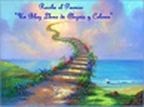























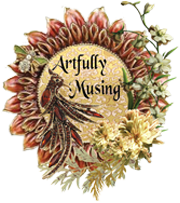












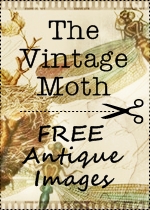


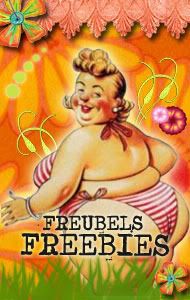




















































































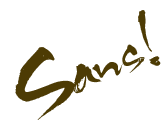

4 comments:
wonderful! I love the cabbage and the vase and your story, needless to say! Did you buy the minis at the museum? they are beautiful and inspiring. Thank you for asking: yes, I do feel a bit better but i'm still swallowing pills and i hate it. i'm not much a drug fan.... unless they are curry, ginger, pepper, cumin, coriander, cloves, nutmeg and so on ;o))
Yes Rosanna,I bought them all at the museum shop. You can imagine how thrilled I was when I saw the mini versions. As far as museum shops go, this one has got to be the best I have been :D!
eeeew, cumin, nutmeg, cloves? not for me ..ginger, pepper, chilli chilli chilli, yummy!
So fantastic there were so many miniversions of the spectacular museum items! The miniversions are lovely as well and so great that also the mini vase revolves!
Have you visited a museum yet, Helene? The National Palace Museum is truly quite a treasure trove for priceless minis!!
You know what? Posting my replies to you made it fun for me to re-read these old posts!
Post a Comment